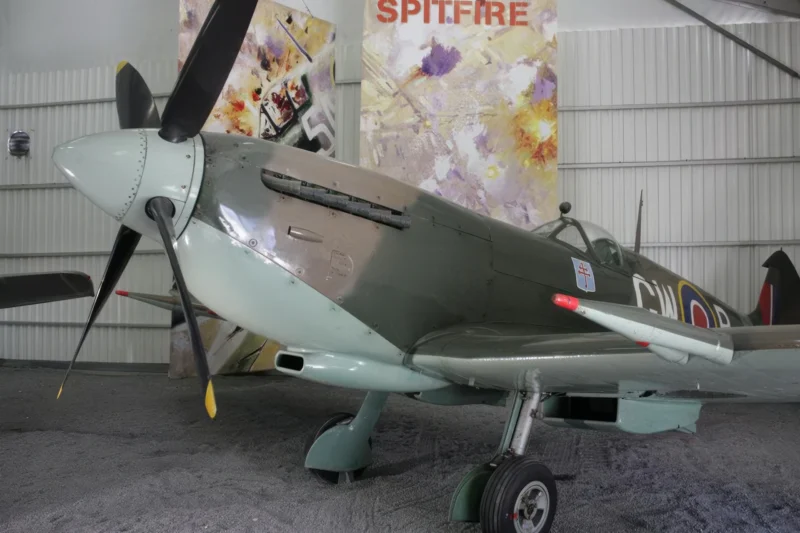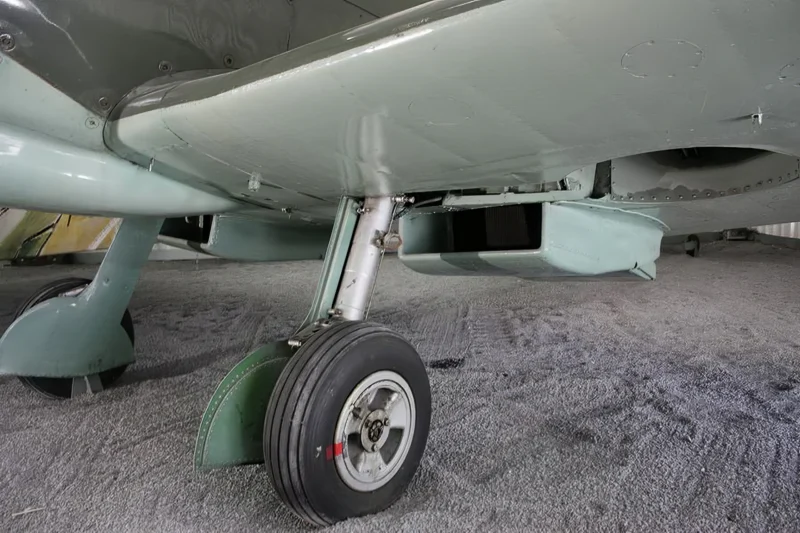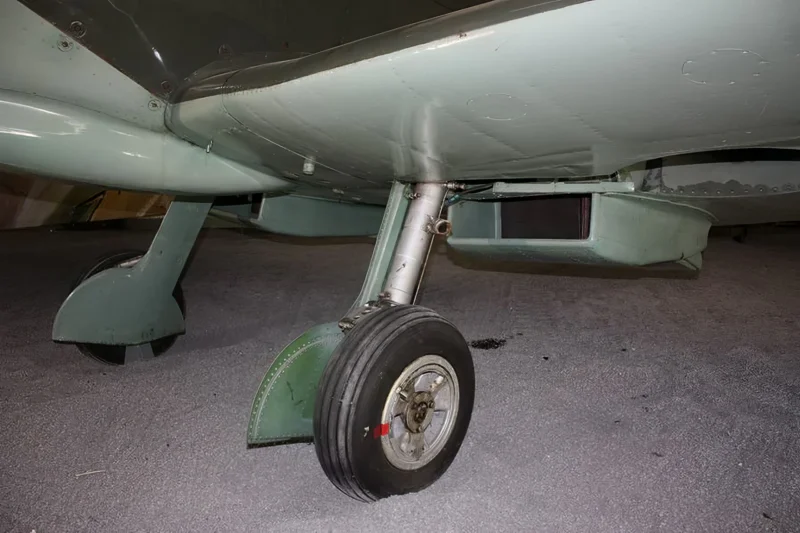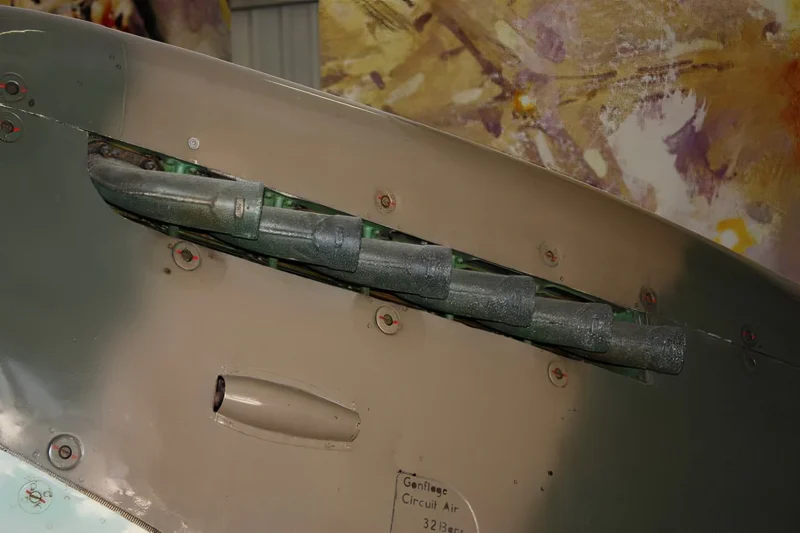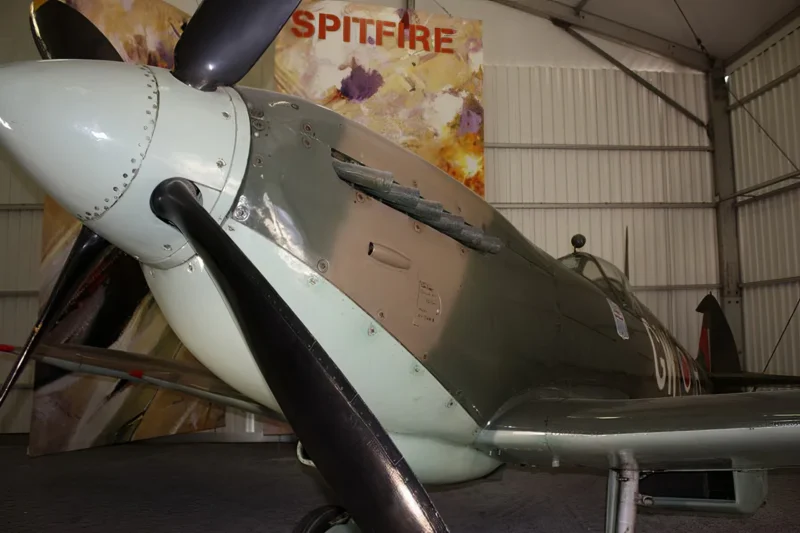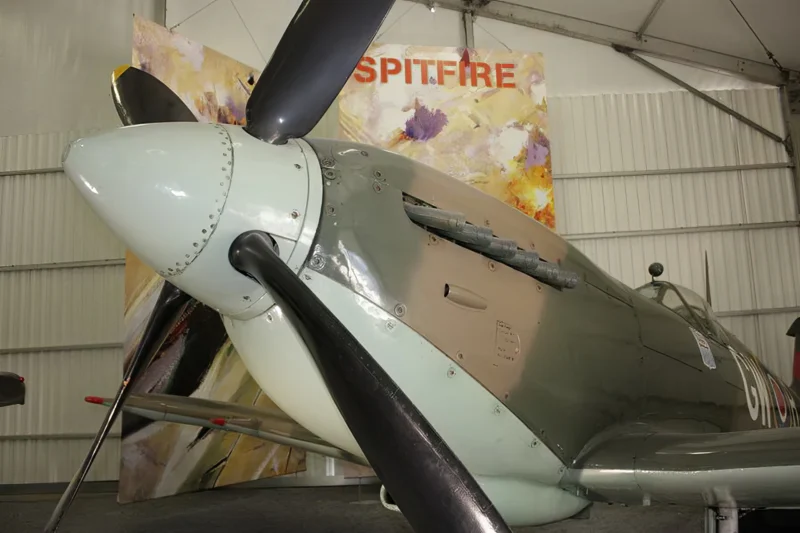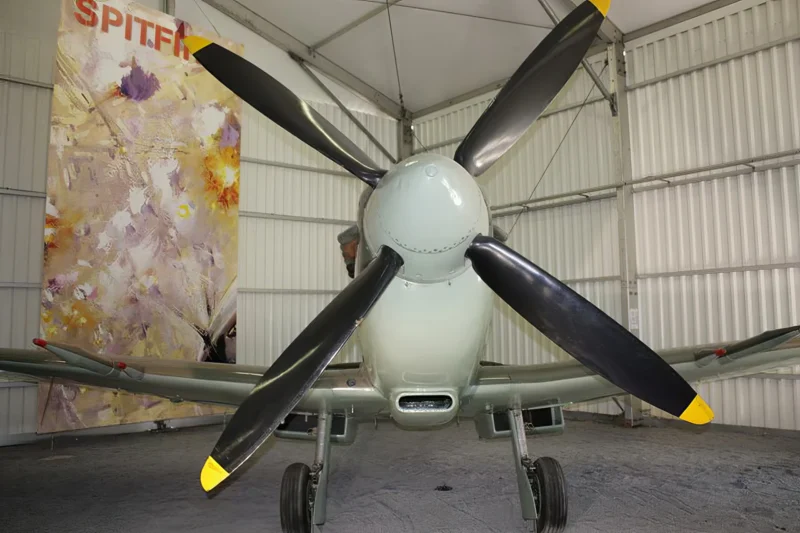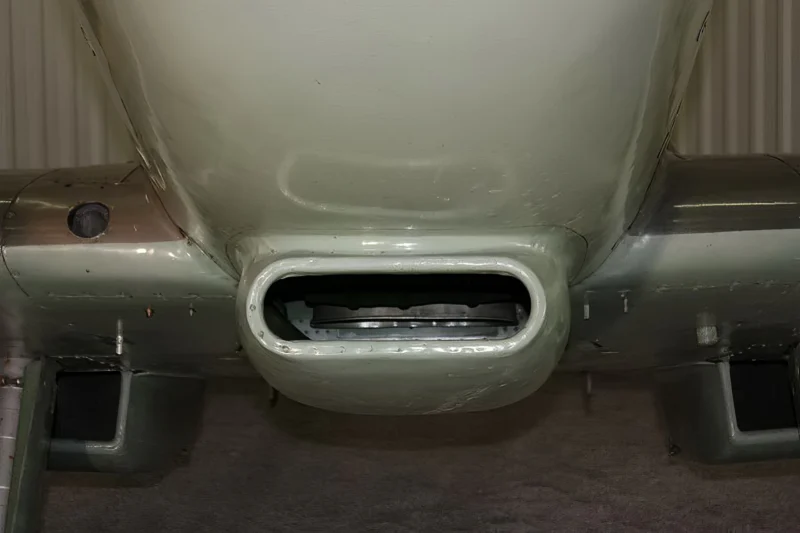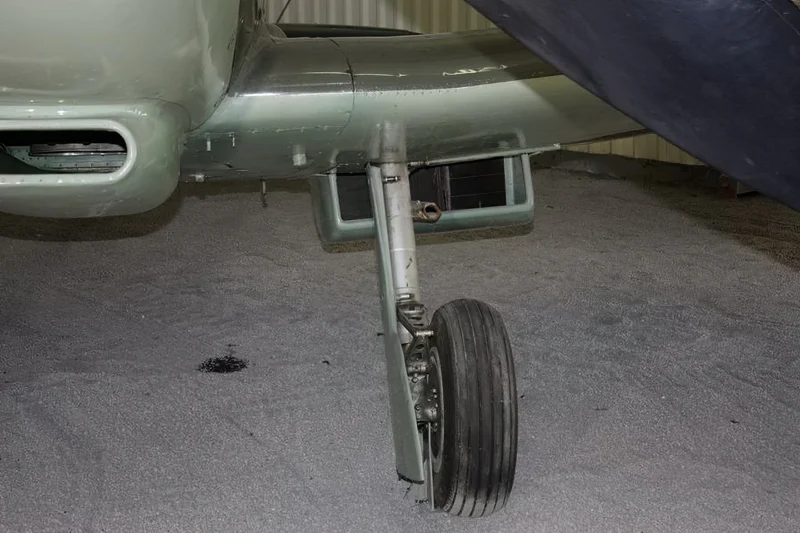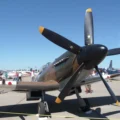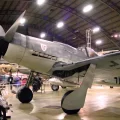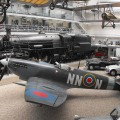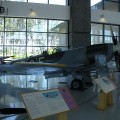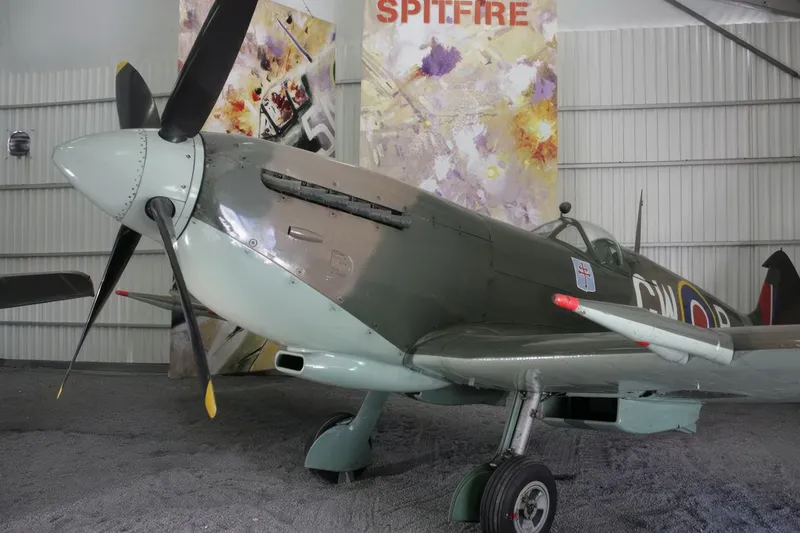
Spitfire Mk XVI | |
|---|---|
| Pays | UK |
| Period | World War II |
| Type | Hunter |
| Description | Album de 29 walk-around photos of the hunter "Spitfire Mk XVI" |
The Supermarine Spitfire (en anglais cracheur de feu, mais aussi au sens figuré soupe au lait) fut l’un des chasseurs monoplaces les plus utilisés par la RAF et par les Alliés pendant la Seconde Guerre mondiale. Les ailes elliptiques du Spitfire lui ont donné une apparence très reconnaissable ; leur section transversale mince lui a donné une vitesse impressionnante ; la conception brillante du concepteur en chef Reginald Mitchell et de ses successeurs (il est mort en 1937), a fait du Spitfire un avion apprécié par les pilotes. Il a servi pendant toute la durée de la Seconde Guerre mondiale, et avec toutes ses variantes a été de tous les combats. Plus de 20 300 appareils furent construits, et les Spitfire sont restés en service jusque dans les années 1950. Spitfire XVI In: Mk.IX equipped with the Packard-Merlin 266; F wing or LF; generally, armament C or E; the majority with a dripping canopy (l 054 copies)
Source: Spitfire on Wikipedia
Technical features: Equipage : 1 pilote Moteur : 1xRolls-Royce Merlin 61 12-Cylindres en V de 1470 ch, refroidis par liquide Type : 12 cylindres en V Puissance unitaire : 1470 ch (1 096 kW) Envergure : 11,23 m Longueur : 9,47 m Hauteur : 3,86 m Surface alaire : 22,48 m Poids à vide : 2 300 kg Poids Maxi : 3 100 kg Vitesse maximale : 575 km/h (Mach 0,49) Plafond : 13 105 m Vitesse ascensionnelle : 1 445 m/min Rayon d’action : 724 km Endurance : 1 840 km Charge alaire : 119,91 kg/m² Rapport poids/puissance : 0,22 kg/ch Armement interne : 2 canons Hispano Mk II de 20 mm (60 obus/arme) 4 mitrailleuses Browning 1919 de 7,7 mm (350 coups/arme) Armement externe : 1 bombe de 230 kg
See also:
The Spitfire Mk XVI was the final major variant of the Spitfire powered by the famous Merlin engine. Essentially a modification of the highly successful Mk IX airframe, the Mk XVI was optimized for low-to-medium altitude operations in the fighter-bomber role during the closing stages of World War II.
Key Specifications (LF Mk. XVI)
| Characteristic | Detail |
|---|---|
| Role | Low-Altitude Fighter and Fighter-Bomber |
| Manufacturer | Supermarine (Built at Castle Bromwich) |
| Engine | Packard Merlin 266 V-12 (US license-built version of the Rolls-Royce Merlin 66) |
| Horsepower | Approx. 1,720 hp (boosted for low-altitude – “LF”) |
| Max Speed | Approx. 400 mph (643 km/h) at low altitude |
| Service Ceiling | Approx. 42,000 ft |
| Armament (E-Wing) | 2 x 20 mm Hispano Cannons 2 x 0.50 cal Browning Machine Guns |
| Ordnance | Up to 1,000 lbs (500 lb centerline bomb + 2 x 250 lb wing bombs) |
| Production | 1,054 units built |
Key Features and Differences from Mk IX
The Mk XVI was almost structurally identical to the Mk IX, but the crucial difference was the engine and armament configuration:
- Engine: The Mk XVI used the Packard Merlin 266. This American-built engine necessitated separate tooling and slight modifications to the engine cowling compared to the British-built Merlin 66 used in the Mk IX.
- Wing: Most Mk XVIs were fitted with the “E” Wing, which standardized the use of:
- Two 20 mm cannon.
- Two heavy 0.50 cal (12.7 mm) machine guns (replacing the earlier four 0.303 cal machine guns).
- Wing Shape (LF): As a Low-Altitude Fighter (LF), the majority of Mk XVIs were built with “clipped wings” (squared-off wingtips). This improved the roll rate and low-altitude speed, which was crucial for engaging German ground targets and countering threats like the Fw 190.
- Visibility: Many later production Mk XVIs featured the “bubble canopy” (cut-down rear fuselage) to give the pilot a dramatically improved all-round view.
The Mk XVI entered service in late 1944 and was primarily used for ground attack missions against V-weapon sites and enemy airfields.
Views : 4751
